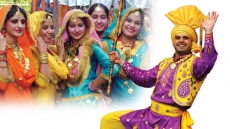What to look out for when choosing television shows for a young child to watch.
In the age of digital streaming – Hulu, Netflix, Amazon Prime, YouTube – parents need to be extra careful about what they’re allowing their kids to watch. After all, there are a lot of awful T.V. shows out there geared towards children. A quick Internet search of the phrase “I hate Caillou” will show just how much animosity grown ups can feel towards animated characters and it’s no surprise. The creators of these shows are often creating them solely for entertainment purposes, and not necessarily as a way to improve the minds of young children.
For children under three who have particularly malleable minds that are vulnerable to absorbing everything around them, it is especially important that screen time is limited (no more than one hour per day) and that the T.V. shows they’re watching are deliberately chosen by a caring adult.
Here are some things to bear in mind when searching for appropriate shows for children under three years old, and a few suggestions of good shows and ones to avoid.

Look for shows with minimal visual stimulation (Pocoyo and Charlie and the Numbers are good examples.)
Try to find shows that hold the scene shot for a minimum of three seconds. This means the characters can move around within the frame of the shot; there aren’t camera close-ups and cuts from person to person (Sophie La Girafe).
Pick shows whose ethos you share. The Looney Tunes shows are funny but they are violent. My kids don’t watch them. If a character says something you don’t like; turn if off and explain to your kids why. I did/do this often when starting a new show. Remember, children learn by example. So if the shows they’re watching are full of unkind language or actions, it is very likely that your child will start to mimic and adopt that behaviour as their own.

These suggestions will help you filter what your children watch when they are under the age of three years old. Remember, their minds are so impressionable during these formative years. It’s best to feed them with hands-on play in the dirt or sand at this age; nevertheless, during times when you need a 15-40 minute break (or less) it’s ok to give your child under three screen time if you stick to these recommendations. You don’t need to switch up the shows for your little one, they love mastering things at this age and will happily watch the same show over and over and over.
Using a screen as a “semi-babysitter” allows for short mental breaks from the monotony of taking care of and entertaining a small child. About 15 to 40 minutes might not sound like a lot of time and maybe it isn’t for some. But sometimes those 15 minutes can make the difference between a bad afternoon and a good one. When T.V. time feels like the best thing to do, then go for it, just make sure you’re doing it with care.
Dr. Bethany Cook is a clinical psychologist specializing in children and families, and a mother of two. She is author of the new book For What It's Worth: A Perspective on How to Thrive and Survive Parenting Ages 0-2.




